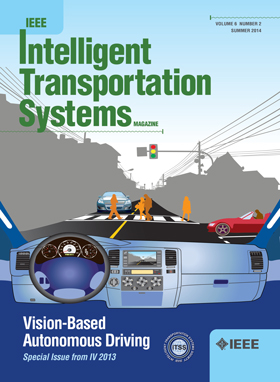An Automated Airborne Support Tool for Aircraft Emergencies: Selection of Landing Sites and 4D Diversion Trajectories
IF 7.9
1区 工程技术
Q1 ENGINEERING, CIVIL
IEEE Transactions on Intelligent Transportation Systems
Pub Date : 2025-01-30
DOI:10.1109/TITS.2025.3531952
引用次数: 0
Abstract
We present a software prototype (SafeNcy) capable of automatically choosing and ranking landing sites for emergency situations and of generating four-dimensional (4D) trajectories towards these sites. We describe the modules composing this framework, together with their main capabilities, interactions and the workflow of the full integrated system. Different types of emergencies are firstly categorized. Then, for each type of emergency, landing sites—including off-airport locations—are ranked, and speed and vertical trajectory descent profiles are tailored accordingly. These algorithms take into account several data from different sources, such as terrain databases, weather forecasts and aircraft performance models. We outline a new concept of operations aiming to integrate SafeNcy into the current aircraft operations and air traffic management paradigms. Several scenarios, focusing on total engine flame-out situations, are described and used to validate the framework, as well as to show its main features. The scenarios were designed in cooperation with a group of expert pilots and engineers. SafeNcy is expected to be an additional function for advanced and extended flight management systems, alleviating flight crew’s workload and contributing to a more digital cockpit. It could also be a technical enabler for future unmanned or highly-automated aviation.求助全文
约1分钟内获得全文
求助全文
来源期刊

IEEE Transactions on Intelligent Transportation Systems
工程技术-工程:电子与电气
CiteScore
14.80
自引率
12.90%
发文量
1872
审稿时长
7.5 months
期刊介绍:
The theoretical, experimental and operational aspects of electrical and electronics engineering and information technologies as applied to Intelligent Transportation Systems (ITS). Intelligent Transportation Systems are defined as those systems utilizing synergistic technologies and systems engineering concepts to develop and improve transportation systems of all kinds. The scope of this interdisciplinary activity includes the promotion, consolidation and coordination of ITS technical activities among IEEE entities, and providing a focus for cooperative activities, both internally and externally.
 求助内容:
求助内容: 应助结果提醒方式:
应助结果提醒方式:


